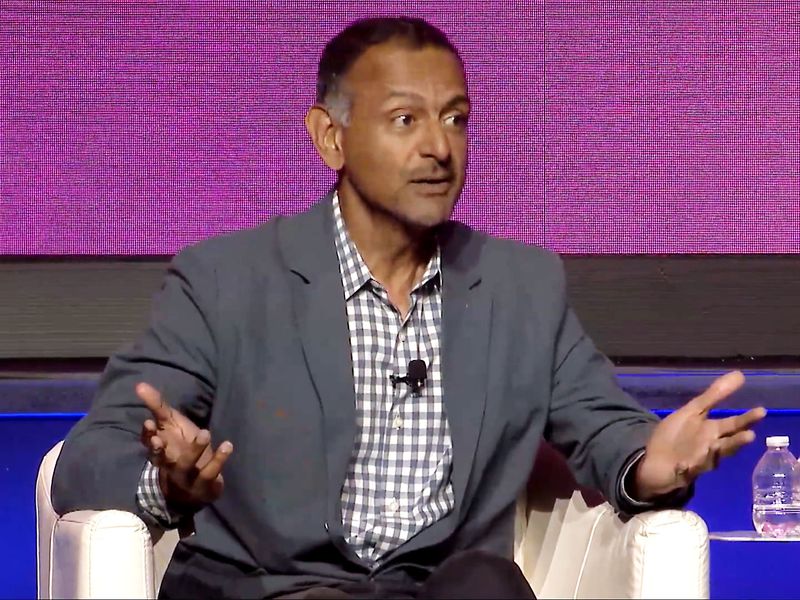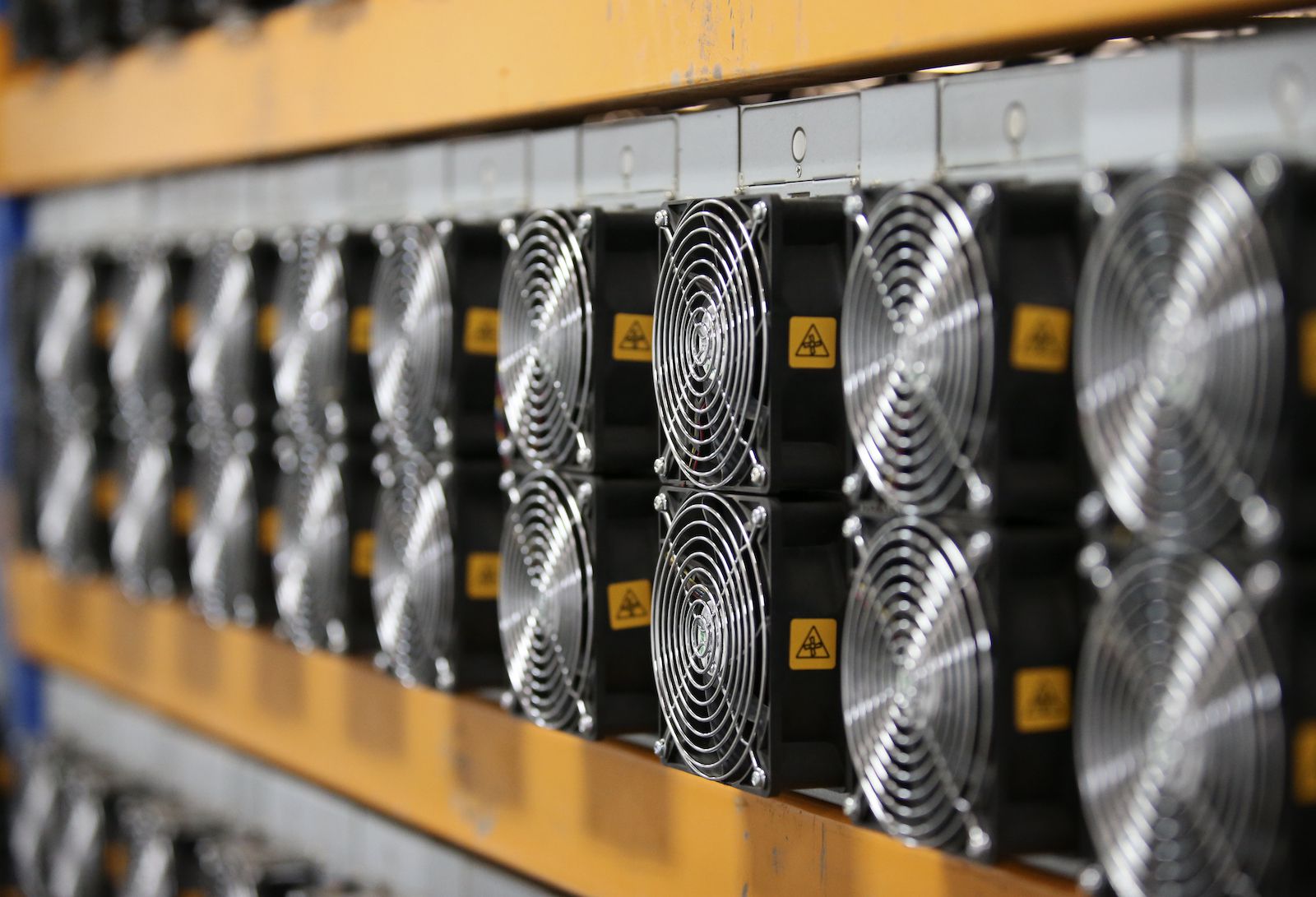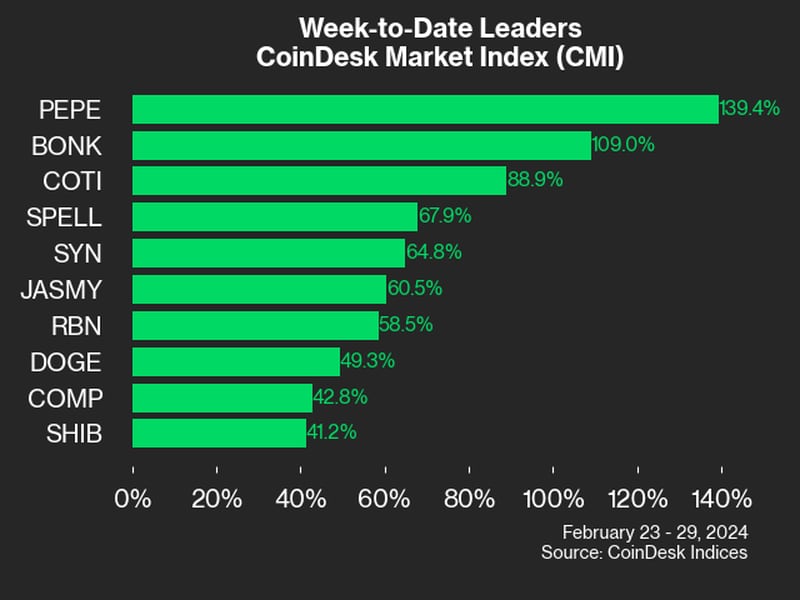Why Bitmain Is Building the World’s Largest Bitcoin Mine in Rural Texas

The Takeaway
- Bitmain, the world’s largest maker of bitcoin-mining computers, chose an old Alcoa aluminum-smelting plant in Rockdale, Texas, for a new bitcoin mine.
- The Beijing company says the plant has an initial power size of 25 megawatts but will be expanded to 50 megawatts and potentially 300 megawatts.
- Texas has an abundance of power resources, so the new plant is unlikely to affect local electricity prices, say officials.
ROCKDALE, TEXAS – In the concrete-and-iron shell of a mostly-abandoned Alcoa aluminum smelter, Chinese and Canadian executives in business suits mingled with local residents in cowboy hats and baseball caps.
They assembled, just outside the town of Rockdale, in the central-Texas countryside, to celebrate the opening of a new bitcoin-mining plant constructed by Beijing-based Bitmain, the world’s largest manufacturer of computers designed to mine cryptocurrency.
County Judge Steve Young, the top elected official in rural Milam County, kneeled to snap photos. Tao Wu, an Arizona-based Bitmain executive sporting a thin bolo tie, gave a tour to curious local residents and journalists, shouting over the whirring of thousands of cooling fans.
“There’s going to be jobs, there’s going to be revenue,” Rockdale Mayor John King told the entourage during a ribbon-cutting ceremony. “We’re going to see great things coming in the future.”
Many of the locals on the tour had little if any idea how bitcoin mining worked, or even what bitcoin was.
“How do I monetize that?” said one person on the tour. “It’s not tangible.”
Texas, long known for its bountiful commodities, from cotton to crude oil, is now drawing a new breed of speculators in search of bitcoin, invented just a decade ago.
 Tao Wu, director of integrated solutions for Bitmain, shows off a bank of bitcoin-mining computers, the length of three football fields.
Tao Wu, director of integrated solutions for Bitmain, shows off a bank of bitcoin-mining computers, the length of three football fields.Bitmain says its operation in the state, which is flush with cheap electricity and plenty of space, represents an alluring opportunity – especially after prices for the cryptocurrency more than doubled this year to about $8,200.
In 2018, the company inked a deal with local officials to set up a bank of computers inside the Alcoa plant to mine bitcoin. Thousands of processing units run 24 hours a day, sending trillions of numbers per second via the Internet to mine bitcoin. The configuration has roughly the height and width of a railroad boxcar but extends in length for three football fields.
Bitmain declined to disclose the cost to build its new facility or the total bitcoin that it will produce. It did reveal that the plant during its initial phase will use 25 megawatts of electricity, the same amount as about 20,000 average U.S. households. The company says it plans to build out the plant to use 50 megawatts, and that eventually capacity could reach 300 megawatts, making it the world’s largest bitcoin mine.
Cryptocurrency-industry officials familiar with the technology say a 50-megawatt bitcoin mine would cost about $80 million to $100 million to build. Using the rated specifications on Bitmain’s Antminer S17 Pro mining computers, along with the website CryptoCompare’s mining profitability calculator, the Rockdale facility could generate an estimated $73 million of revenue per year, based on current prices. The only main input for these mines is electricity, and among U.S. states, Texas has the fourth-lowest power costs for industrial customers, according to government data.
The project was initiated last year, then shelved in early-2019 after bitcoin prices tumbled roughly 75 percent from their 2018 highs. As prices rebounded this year, Bitmain rushed to start up production.
“Once the price turned around, we ramped up,” says Clint Brown, 54, a former construction contractor, who now serves as a Bitmain project manager. “And it was like, ‘hurry up, we need to get this done.’”
 Executives involved with the new Bitmain plant, after a barbecue luncheon at the Rockdale Country Club.
Executives involved with the new Bitmain plant, after a barbecue luncheon at the Rockdale Country Club.The new Texas facility is Bitmain’s largest-ever mining project to date, the company’s managing director for marketing, Bill Zhu, said in an interview under a shady tree outside the nearby Rockdale Country Club. The company’s signature product is its line of Antminer computers. Officials said the new Rockdale site is named Dory Creek, after the ant genus Dorylus, which includes driver ants from southern Africa.
Zhu responded to a concern expressed by some local residents that the new facility might quickly be shuttered if the bitcoin market suffers a downturn; people in these parts are all too familiar with commodity cycles.
“We really can find some good resources in North America, and then we pick up Texas, and we think these resources are good enough to invest in for the long term,” he said, adding:
“Our investment is not so sensitive to the bitcoin price. We don’t care so much how much it is next month. We care three years from now how much it is.”
The project has caused a stir in Rockdale (population: 5,595) which was hit hard in late-2008 when the giant Alcoa smelting facility closed down, leading to the loss of more than a thousand jobs.
On Friday morning, a group of former Alcoa workers assembled for morning coffee and breakfast at Lee’s Landing, a diner where the walls are adorned with country implements including a pitchfork and set of stirrups. A sign in the bathroom reads, “Give a man a fish and he will eat for a day. Teach a man to fish and he will sit in a boat and drink all day.”
Locals skeptical
One of the men at Lee’s, Royce Hudson, 73, said he got out of the Marines in November 1967, returning to central Texas and a job at the Alcoa smelter. He worked there for the next four decades, becoming a furnace operator, until he retired in 2008 when the facility closed, he said.
These days, he laments the fate of the local community, where the next generation is finding jobs harder to come by, and many people endure long commutes to work in Austin, Round Rock, Temple and Bryan-College Station.
Hudson says he’s happy that Bitmain is investing in the community, though he admits to knowing very little about what they do: “People are a little skeptical, because nobody really understands how it works,” he says, declining to have his coffee refilled. “We’re just not technically advanced enough.”
One of his former colleagues from the plant remarked that he couldn’t understand why there was nothing shipping out of the new plant, in the way that aluminum ingots used to issue forth from the old smelter.
The reality is that bitcoin mines represent a new type of industrial facility, with a glaring absence of heavy machinery and spewing little to no pollution, aside from the sizable emissions from the associated power generation. The output — the mined bitcoin — is delivered virtually, and almost instantaneously.
 Royce Hudson, right, says locals are “skeptical” of the new Bitmain project because they don’t fully understand what bitcoin is, or how it works.
Royce Hudson, right, says locals are “skeptical” of the new Bitmain project because they don’t fully understand what bitcoin is, or how it works.In some other states where bitcoin mining projects have gone in, including Washington, residents have complained that their monthly electricity bills shot up because of the added demand on the local grid.
Texas, by contrast, has a big enough electricity market — the biggest in the U.S. — that it can absorb new users. The state’s total annual power consumption is more than 50 percent higher than that of second-place California, according to the U.S. Energy Information Administration.
Cheap power
Power prices are held in check by the state’s abundant local supply of natural gas, used to fuel generators, as well as by the relative isolation of the state’s electric-transmission network from the rest of the nation’s, on a grid known as the Electric Reliability Council of Texas. For the most part, whatever gets generated in the state, stays in the state. It doesn’t hurt that most Texas cities and towns feature a competitive electricity market, so businesses and households can shop around for a good deal.
Greg Pendley, president of CGP Solutions, a Houston-based energy consultant who helps big wholesale power purchasers find suppliers, says he often arranges deals for governments where the contract size can range from 5 megawatts to 8 megawatts. His point was that the Bitmain account is quite large.
The project has another unique attribute, he noted: “100 percent load.” Unlike some factories or government offices that might throttle back on power usage at night, when workers go off shift, Bitmain’s computers are constantly working.
“With this kind of industry, they’re looking for bitcoin, so they don’t make money if they’re not running,” Pendley said in an interview at the plant, where he joined the tour.
The facilities are light on employment compared with big factories or auto-assembly plants whose personnel can easily run into the thousands. Bitmain currently operates the Rockdale mine with a staff of fewer than 50 people.
“Once you get it up and running, it doesn’t take that many guys,” says Sheldon Bennett, chief operating officer of the Canadian company DMG Blockchain Solutions, which manages the new plant under a contract with Bitmain.
King, the mayor, said in an interview that the project looked pretty good to him, even after Bitmain won tax abatements from the county government.
It’s all in the name of economic development — a well-honed instinct in a business-friendly state like Texas that has never been shy about monetizing its natural resources for profit.
“If they’re housing people locally, and they’re shopping locally, we’re going to benefit,” King says. “It’s the first step in trying to regrow our economy.”
Images via Brad Keoun










